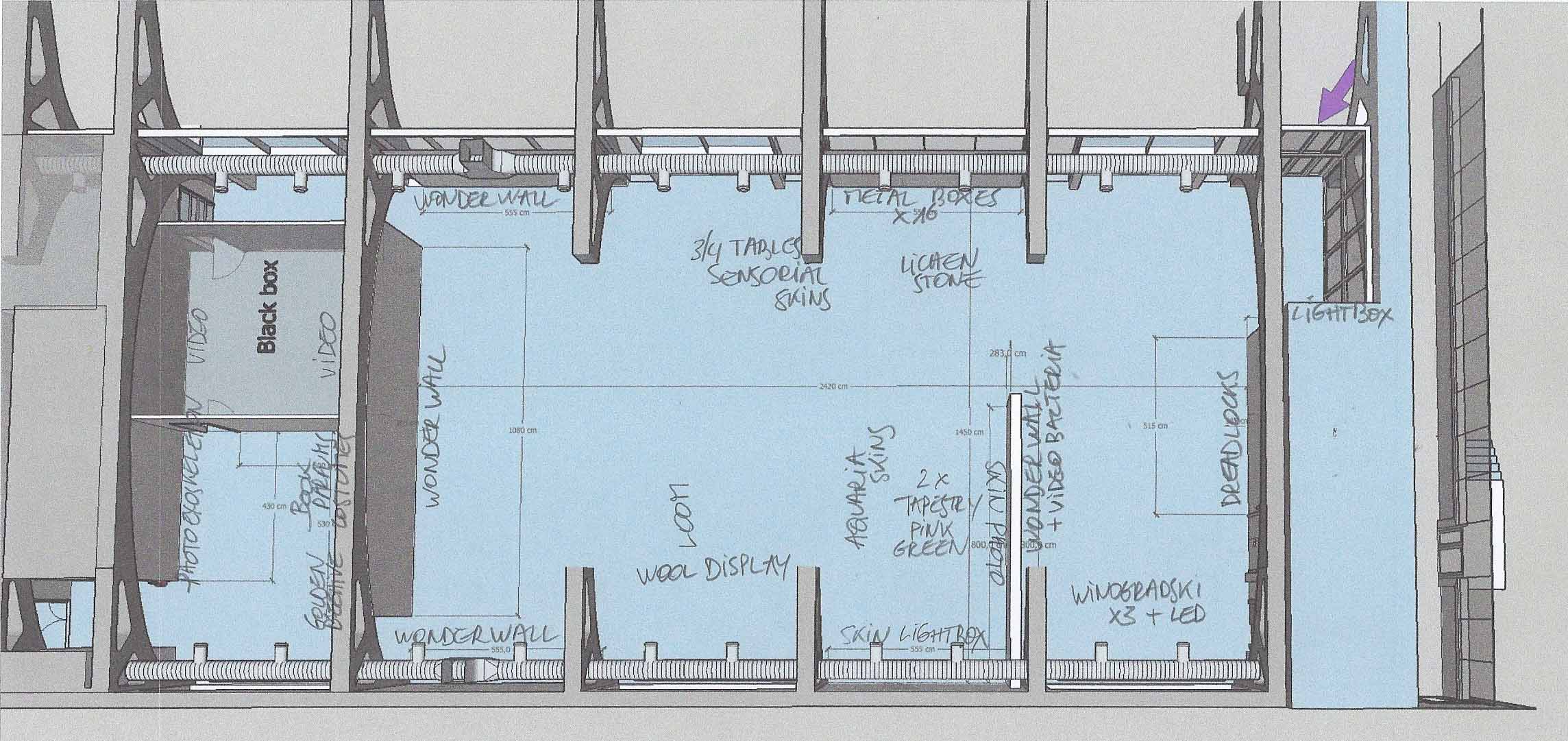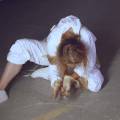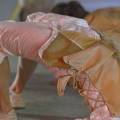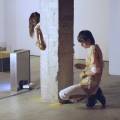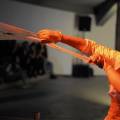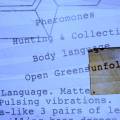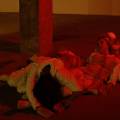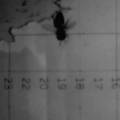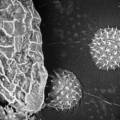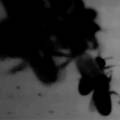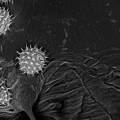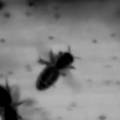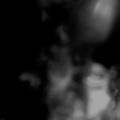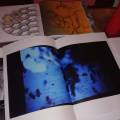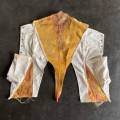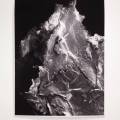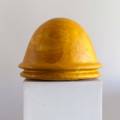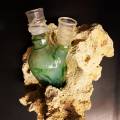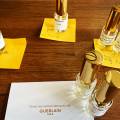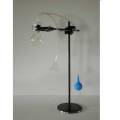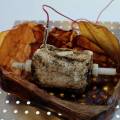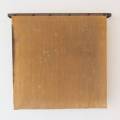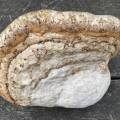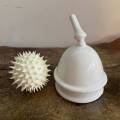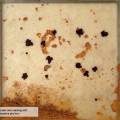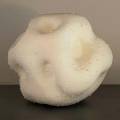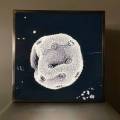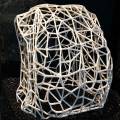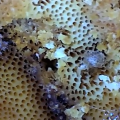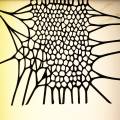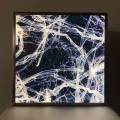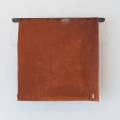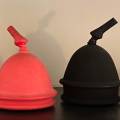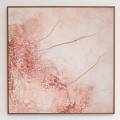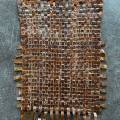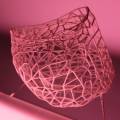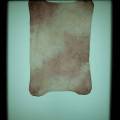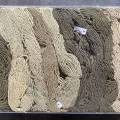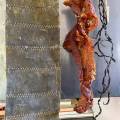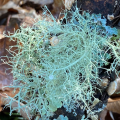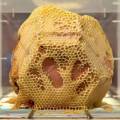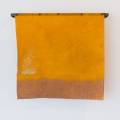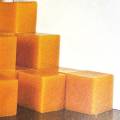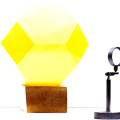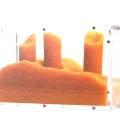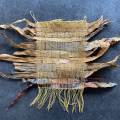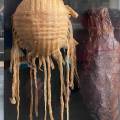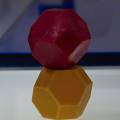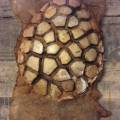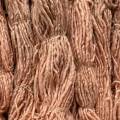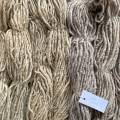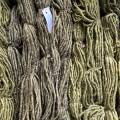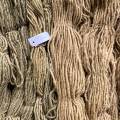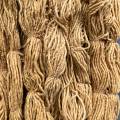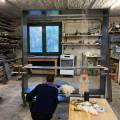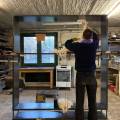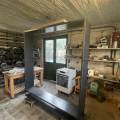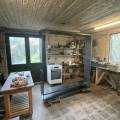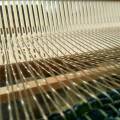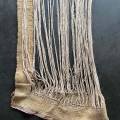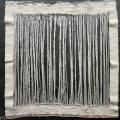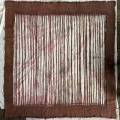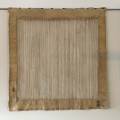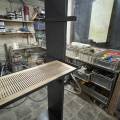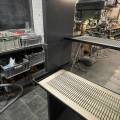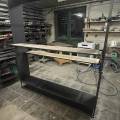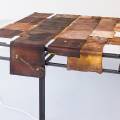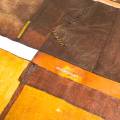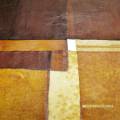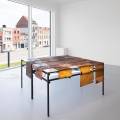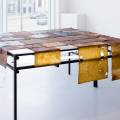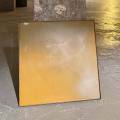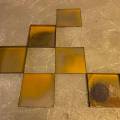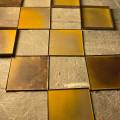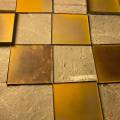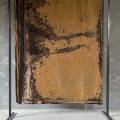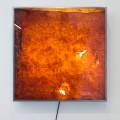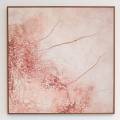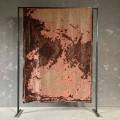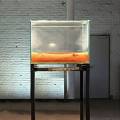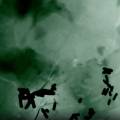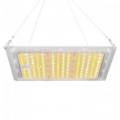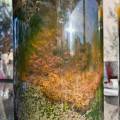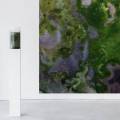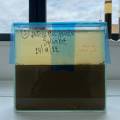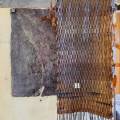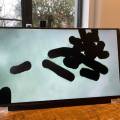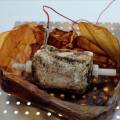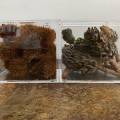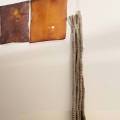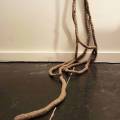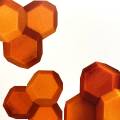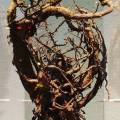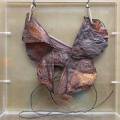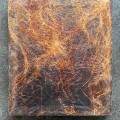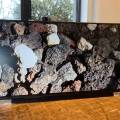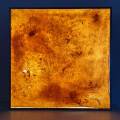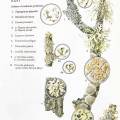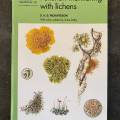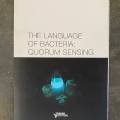Table of Contents
Alchimia Nova : exhibition Kunsthalle Mulhouse
16/2/2023 - 30 /4/2023, Mulhouse
communiqué de presse
http://kunsthallemulhouse.com/medias-pro/alchimia-nova-anne-marie-maes — Alchimia2023
communique de presse
press release
concept expo Alchimia Nova
In Alchimia Nova focust Anne Marie Maes op organische netwerken en op de symbiotische relaties tussen levende organismen - inclusief planten, bacteriën en schimmels. Ze onderzoekt het ecosysteem van de Elzas-regio aan de hand van een kleurenpalet geëxtraheerd uit organisch materiaal. De symbiotische relaties van het bodemleven staan garant voor een gezonde grond waarin wilde planten floreren. De tinten en de saturatie van de pigmenten worden beïnvloedt de alchemie van de grond waarin deze microorganismen leven: de pH van de aarde, de hardheid van het regenwater, de uren regen en zonneschijn. Maar lichen, planten, schimmels en bacteriën zijn ook verhalenvertellers die ons verbinden met onze omgeving door hun kleuren, hun geuren, de herinneringen die ze oproepen. Dit project is een presentatie van 1 van Maes’ langlopende projecten, nl. het Lab voor Vorm en Materie (Lab for form and Matter) waarin de kunstenaar sinds lang experimenteert met organische materialen die o.a. medegecreëerd zijn door bacteria, algen en insecten. Haar onderzoek wordt gevoed door het werk van wetenschappers als Lynn Margulis (Symbiotic Earth) en Donna Haraway (Tentacular Thinking). Donna Haraway gebruikt de term tentaculair denken als een kritiek op een visueel gedomineerde, antropomorfe vorm van denken. Zij stelt dat de wereld zou moeten worden waargenomen door aan te raken, te voelen en dingen uit te proberen.
De opstelling in de Kunsthalle Mulhouse wordt uitgebreid met nieuw werk, nl. een reeks Winogradski Columns waar naast het eigen kleurenonderzoek ook de samenwerking met de Universiteit van Straatsburg aan bod komt. Verder komt er een monumentale sculptuur, een dubbelzijdig weefgetouw dat technisch precies is uitgevoerd in opgeschuurd metaal. In deze sculptuur contrasteren koele materialen met de warme materialen van de wol en garens die geverfd zijn met de natuurlijke pigmenten.
De productie van de expo wordt ondersteund door N.A! Projects en door het Ministerie van Cultuur van de Vlaamse Gemeenschap.
plan Kunsthalle
presentation at the Kunsthalle
Alchimia Nova is an exhibition in which living processes are important. The central element of the exhibition is the Lab for Form & Matter: a workshop with a “library of curiosities,” an oversized loom set up like a sculpture and large work tables. We discover a series of pedestals of different heights displaying various bizarre organic objects. Across the lab are aquariums set up in which bacterial skins grow.
Alchimia Nova is een tentoonstelling waarin levende processen belangrijk zijn. Het centrale element van de tentoonstelling is het Lab for Form & Matter: een werkplaats met een 'bibliotheek vol curiosities', een oversized weefgetouw opgesteld als een sculptuur en grote werktafels. We ontdekken een reeks sokkels van verschillende hoogtes die verschillende bizarre organische objecten tonen. Overal in het lab staan aquaria opgesteld waarin bacteriële huiden groeien.
1. video black box:
- video 'a Bee is a Bee is a Bee'
- video 'Variation Games'
the 2 videos are projected facing each other on the walls of the black box
2. room next to the black box (bee space):
- smaller wall: photo Exoskeleton
- larger wall: Golden Beehive (pedestal or wall shelf)
- Bee perfume Open BioLab
- Bee perfume Guerlain
- artist book performance Palais de Tokyo
3. library of curiosities part#1
Het Laboratorium voor Vorm en Materie situeert zich op het snijvlak van biologie, ecologie en hedendaagse cultuur. Het artistiek onderzoek vertrekt van mijn interesse in planten en bacteriën als medium voor artistieke expressie en door een zekere fascinatie voor natuurlijke structuren en organische processen op microscopisch niveau. De neerslag van dit onderzoek kristalliseert zich in sculpturen, objecten, video's, foto's en installaties die tot stand komen door middel van verschillende digitale en traditionele technieken. Ik onderzoek bvb. de mogelijkheden van bacteriële biofilms voor eco-monitoring (biosensors) en ik experimenteer met de implementatie van organische materialen in objecten.
De objecten die gecreëerd zijn in het lab worden gepresenteerd in een soort van organische bibliotheek, uitgestald op de grote muur aan het einde van de tentoonstellingsruimte, met uitlopers op de muren links en rechts. Er wordt gebruik gemaakt van verschillende dragers: houten en metalen schapjes, videoplayers (klein), plexiglas presentatieboxen, … De muur is geschilderd in een warm antracietgrijs, met een mosgroene tint. Op de muur worden de objecten geordend per kleurengroep: WIT, GROEN, ROze-ROOD en GEEL.
The Laboratory for Form and Matter is situated at the intersection of biology, ecology and contemporary culture. The artistic research starts from my interest in plants and bacteria as a medium for artistic expression and through a certain fascination with natural structures and organic processes on a microscopic level. The result of this research crystallizes into sculptures, objects, videos, photographs and installations created by means of various digital and traditional techniques. For example, I investigate the possibilities of bacterial biofilms for eco-monitoring (biosensors) and I experiment with the implementation of organic materials in objects.
The objects created in the lab are presented in a kind of organic library, displayed on the large wall at the end of the exhibition space, with offshoots on the walls to the left and right. Various supports are used: wooden and metal shelves, video players (small), plexiglas presentation boxes, … The wall is painted in a warm anthracite gray, with a moss green tint. On the wall, the objects are arranged by color group: WHITE, GREEN, pink-red and YELLOW.
WHITE
‘O Tiger-lily,’ said Alice, addressing herself to a flower that was waving gracefully about in the wind, ‘I wish you could talk!’
‘We can talk,’ said the Tiger-lily: ‘when there’s anybody worth talking to.’ Alice through the Looking Glass, Lewis Carroll.
PINKISH-RED
GREEN
I wanted to know what causes a given kind of work to be regarded by women as embarrassing, both in the past
and in the present: whether this has to do with the way the material is handled or whether it really lies in the material itself. Rosemarie Trockel.
YELLOW
4. a loom as sculpture
Een groot dubbelzijdig weefgetouw in geborsteld metaal wordt gepresenteerd als een sculptuur. High tech precisie design, industriële look. Het weven wordt hier gebruikt als een metafoor voor symbiotische acties tussen planten en microorganismen uit het lokale ecosysteem. Door te werken met primaire materie dat geverfd is met pigmenten gewonnen uit lokaal geoogst organisch materiaal, wordt een kleurenportret geschetst van de Elzas regio.
A large double-sided loom in brushed metal is presented as a sculpture. High tech precision design, industrial look. Weaving is used here as a metaphor for symbiotic actions between plants and microorganisms from the local ecosystem. Working with primary matter dyed with pigments extracted from locally harvested organic material, a color portrait of the Alsace region is sketched.
Construction / Deconstruction ⇒ paint a color square on the wall in a contrasting color
Trailing Yarns / Fils Suspendus / Hangende Draden
Warp and Weft / Chaînes et Trames / Ketting en Inslag
Tracer les Lignes
Traces / la Trace
la Ligne du Vide
Paroles Enroulées
Tissu Tissé / la Texture, le Texte / la Peau
Kleurraadsels die tevoorschijn komen uit een gescande omgeving
Colour riddles emerging from a scanned environment
Enigmes de couleur émergeant d'un environnement scanné
Patterns / Communities / Populations
Fluid Interactions
Patters in Nature
Self-made Tapestry
5. Sensorial Skins
Met mijn Sensorial Skins onderzoek ik de sculpturale mogelijkheden van organische materialen. Samen met bacteriën transformeer ik fermenterende culturen tot weefsels, membranen en biofilms. Zo creëer ik complexe oppervlakken die onze zintuigen prikkelen door hun materialiteit, hun textuur, hun kleuren en geuren.
De steeds veranderende weefsels krimpen, verharden of verzachten in reactie op vochtigheid, temperatuur en andere parameters van de omgeving. Ze zijn het resultaat van processen die doen denken aan alchemistische praktijken, gebaseerd op veldwerk en wetenschappelijke methodologie.
De weefsels worden interfaces tussen het menselijke en het niet-menselijke, het macroscopische en het microscopische. Ze transformeren het natuurlijke tot het culturele domein.
With my Sensorial Skins I investigate the sculptural potential of organic materials. Together with bacteria I transform fermenting cultures into fabrics, membranes and biofilms. I thus create complex surfaces that arouse our senses through their materiality, their texture, their colours and smells.
The ever-evolving fabrics shrink, harden or soften in response to humidity, temperature and other parameters of the environment. They result from processes reminiscent of alchemical practices, grounded in fieldwork and scientific methodology.
The fabrics become interfaces between the human and the non-human, the macroscopic and the microscopic. They transform the natural into the cultural realm.
5.a 16 square metal boards with wax / lichen stone
wall wax work (16 pieces) virgin beeswax
lichen rock (microcosmos) Xanthoparmelia mougeotii of Zonnetjesschildmos
6. tapestries + aquaria with living cultures
De 2 grote weefwerken (oranje en roze) vormen een visualisatie van een materiaal waar ik veel mee werk: microbial skin (of bacterial leather). Dit is een materiaal dat gegroeid is door een symbiotische actie tussen bacterieën en gistcellen. Ik noem deze materialen mijn ‘Sensorial Skins’, omdat ze enorm tactiel zijn, en zeer responsief aan atmosferische omstandigheden, net als echte huid. Ik lees de design van deze ‘Sensorial Skins’ als sterk ingezoomde topografische mappen van de omgeving. De huidplooien en -lijnen op de ‘skins’ kunnen gezien worden als de vliegroutes van de honingbijen wanneer ze foerageren in de omgeving van hun beehive.
The 2 large tapestries (orange and pink) are a visualization of a material I work with a lot: microbial skin (or bacterial leather). This is a material grown by symbiotic action between bacteria and yeast cells. I call these materials my 'Sensorial Skins,' because they are tremendously tactile, and highly responsive to atmospheric conditions, just like real skin. I read the design of these 'Sensorial Skins' as highly zoomed-in topographical maps of the environment. The skin folds and lines on the 'skins' can be seen as the flight paths of the honey bees as they forage around their beehive.
A woven topographic rendering visualizes the ecology of my rooftop garden. Interactions between plants, insects, bacteria and the abiotic elements as temperature, light, water and wind.
7. Winogradski Colums
Samen met de microbiologen van UniStra (Universiteit Strasbourg) werd er gewerkt aan visualisaties van grondsamples uit de regio. Met de SEM en TEM microscopen en met de lichtmicroskoop werden beelden gemaakt van verschillende uitstrijkjes. Deze beelden werden bijeengebracht in een video-impressie.
We zien ook een sculptuur bestaande uit 3 aquaria; deze vormen een levende, evoluerende installatie. Elk aquarium bevat een Winogradsky-cultuur, een zeer divers micro-ecosysteem van bodembacteriën en algen. Tijdens een workshop voorafgaand aan de installatie werden bodemmonsters uit de regio verzameld en vervolgens werden die enkele weken ter plaatse opgekweekt. Het geheel van de Winogradski sculptuur kan gezien worden als een portret van de regio. Het visualiseert de complexiteit van het lokale milieu via zijn bacteriële en geologische profiel. De cultuur blijft zich in de loop der tijd zelfstandig ontwikkelen en creëert complexe patronen. De culturen veranderen van kleur, textuur en patroon als reactie op de omgevingsfactoren zoals zuurstofgehalte, licht en temperatuur.
Together with the microbiologists of UniStra (University of Strasbourg), visualizations of the content of soil samples from the region are being worked on. Images of various swabs were taken with the SEM and TEM microscopes and with the light microscope. These images were compiled into a video impression.
We also discover a sculpture consisting of 3 aquaria; these form a living, evolving installation. Each aquarium contains a Winogradsky culture, a highly diverse micro-ecosystem of soil bacteria and algae. During a workshop prior to the installation, soil samples were collected from the region and then cultured on site for several weeks. The entirety of the Winogradski sculpture can be seen as a portrait of the region. It visualizes the complexity of the local environment through its bacterial and geological profile. The culture continues to evolve independently over time, creating complex patterns. The cultures change color, texture and pattern in response to environmental factors such as oxygen content, light and temperature.
extra: movie bacteria-scratch
8. wonder wall part#2
BROWN
The elements of the 'BROWN' wonder wall are presented on hooks, shelves and pedestals in wood, metal or plexiglass. They are all fixed on the wall.
The wall is paint in a rusty-brown-orange color with a warm hue.
The names of brown dyes are sweet and edible. You can buy a coat in caramel,toffee, almond, coffee, chocolate or curry. Brown is sweetness and nourishment. There was once a colour called toast. Derek Jarman, Chroma.
9. entry Kunsthalle
The wall is paint in anthracite grey with moss-greenish hue.
The red light box is presented on the entry wall, with or without the black dot-skin (tbd).
Symposium: art/science, une fertilisation croisé
- VUB chemie / Alex / pollendatabase
- Bio HackLab Barcelona / Núria / microbiology in the beehive
- Leonardo article / Dennis Dollens / metabolic art (new materials)
- Erasmus Hogeschool Open BioLab / Tom / cyanobacteria
- VU Amsterdam / Raoul Frese / cyanobacteria and biofilms
- UNISTRA / Pierre Fechter / soil bacteria, microbiology
strenghts and weaknesses
similarities (points of interest) and differences (language, focus of field of interest)
- ronde tafel, 5 à 6 participanten
- Luc Steels / Sandrine Wymann / Guillaume Logé / Albertine Kopp / Christophe Chailloux / AM Maes / Pierre Fechter / Fernando Garcia Dory
- 15h/18h table ronde; 18h/19h visite guidé expo (+perfo); 19.30/21h buffet; 21h30 performance ou film
- TBD: 30 mars 2023
info voor symposium:
Diffusion de la table ronde: elle sera transmise en direct de 15h à 17h sur Radio MNE https://www.radiomne.com> (107.5 / DAB+ à Mulhouse) et Node https://p-node.org (DAB+ à Paris).
Les enregistrements sonores seront par la suite disponibles sur les chaines Youtube et Soundcloud du centre d'art. Concernant Youtube, j'envisageais de bricoler un diaporama.
https://wiki.fermenthings.be/how-to/crash-course-fermentation-june/

